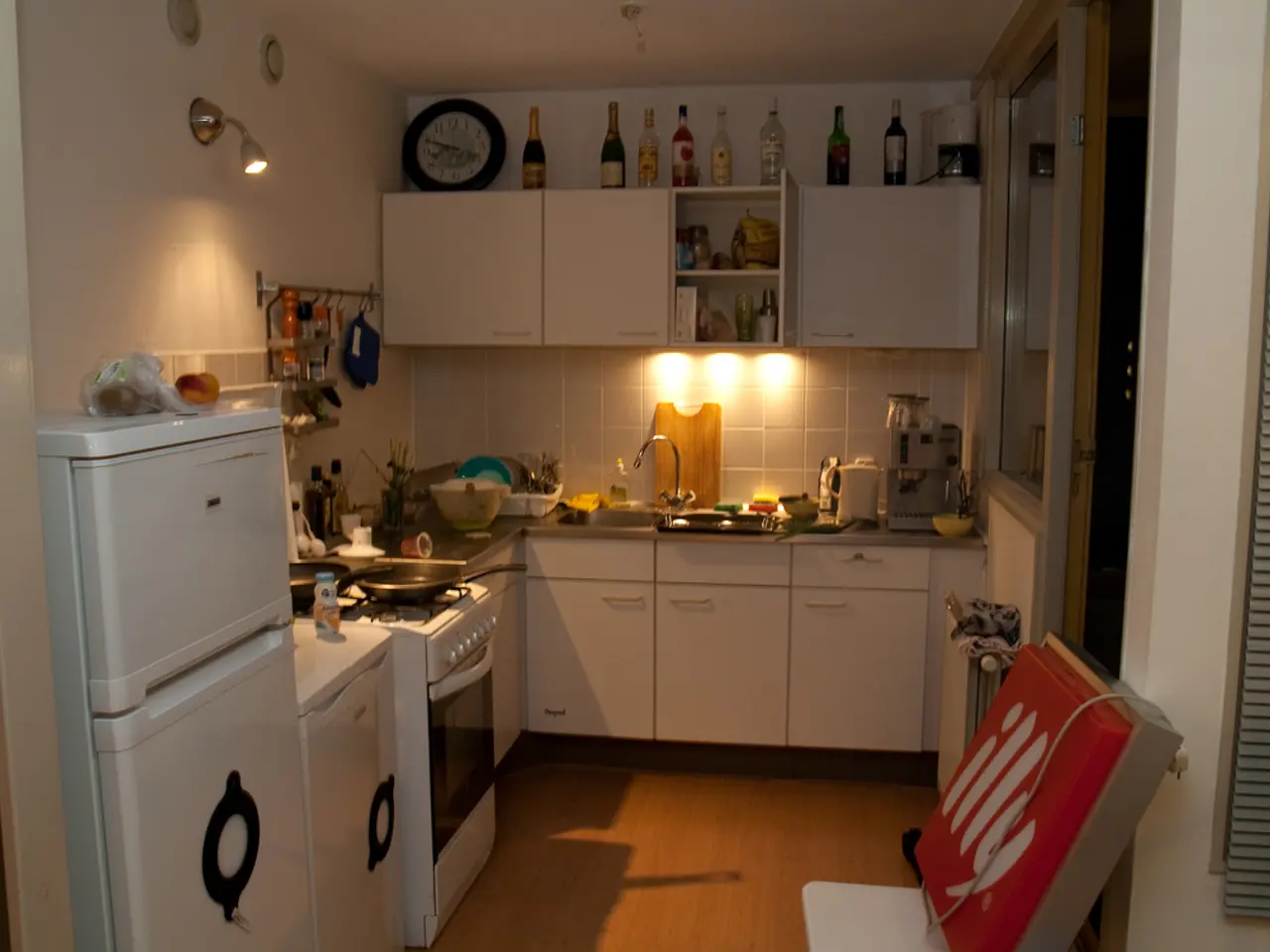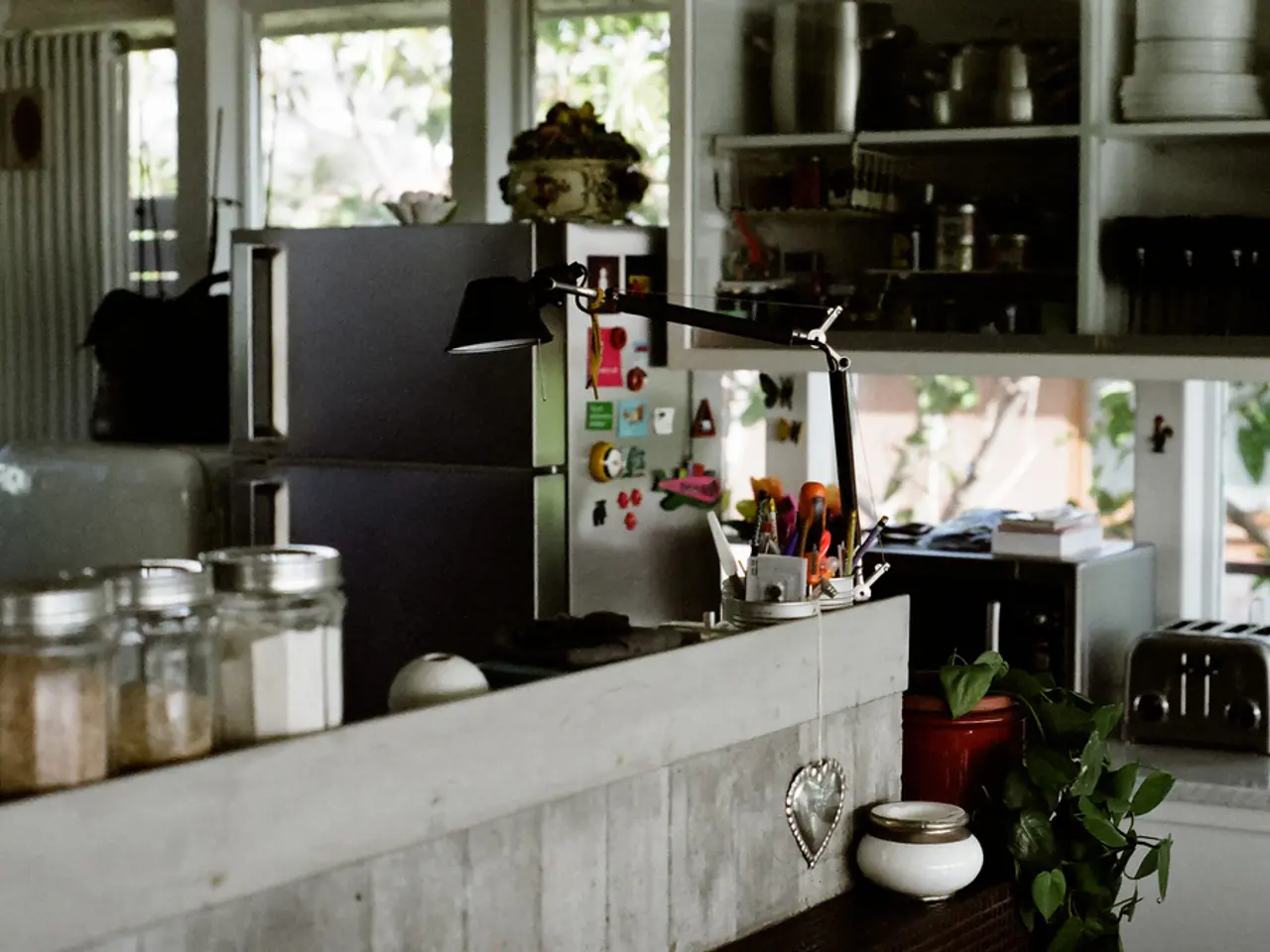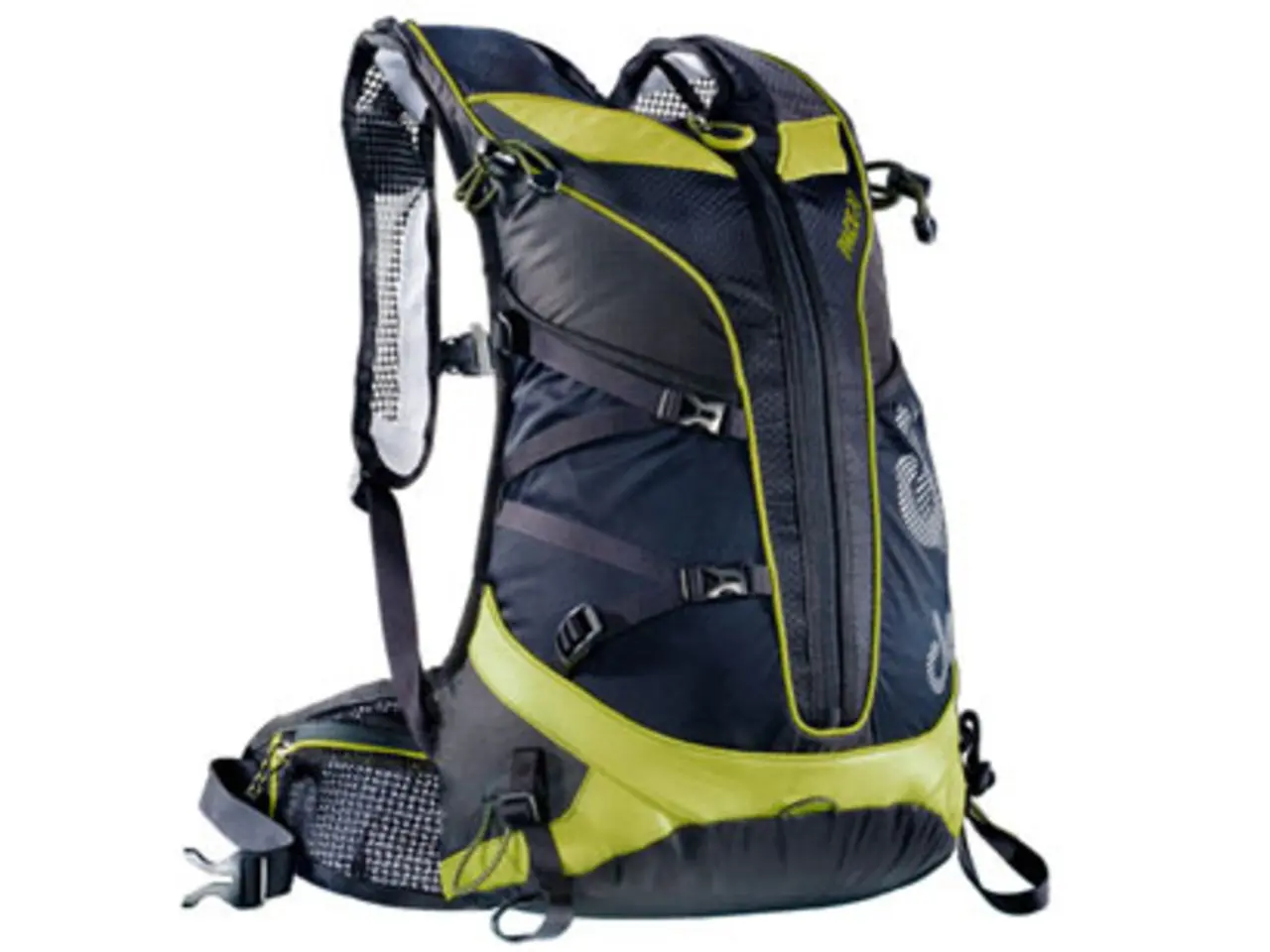Maintaining a Refrigerated Pantry: A Year-Round Guide to Preventing Food Rot
=============================================================
In the heart of every kitchen lies the pantry, a space that houses our essential food items. However, keeping this space cool and stable can be a challenge, especially during warmer months. Here's a guide on how to insulate and cool your pantry effectively.
Jayne Everett, the creative director of Naked Kitchens, and Jared Robinson, the owner of custom cabinet makers Robinson Trim, share their insights on pantry temperature control. The UK Food Standards Agency (FSA) also recommends storing non-perishable pantry staples in a cool, dry place, away from direct sunlight and heat sources.
Solid timber or insulated materials are excellent choices for blocking external heat in pantry doors. Insulating pantry walls can help keep these spaces cool and stable. Thin walls or doors can allow external heat to seep into your pantry. For built-in pantries, a north-facing wall or a part of the kitchen that gets minimal sunlight is ideal. Freestanding pantries should be placed away from heat-generating appliances like fridges or dishwashers.
Effective methods for insulating and cooling a warm pantry include improving insulation with reflective barriers and sealing leaks. A radiant barrier—reflective foil that reflects radiant heat—on surfaces such as the ceiling above the pantry can significantly reduce heat transfer from warmer areas. Seal any gaps or leaks that could let warm air in or cool air out.
Incorporating vented fronts or mesh screens on vegetable drawers can provide ventilation. Poor ventilation can leave your pantry feeling stuffy and damp. Adding stone or slate shelving to your pantry can help keep your groceries and dry goods cool. Marble and quartz are naturally cool materials that can help regulate temperature in a pantry. Cork tiles are another option for insulating pantry walls, providing a unique, textured finish.
For cooling, evaporative cooling methods can be effective, especially in dry climates. However, such solutions often require design integration and are most efficient in low humidity environments. Improving airflow can also help cool the pantry, such as by installing a small fan to circulate air or providing ventilation vents if the pantry lacks them. If humidity is an issue, using a dehumidifier or ensuring ventilation can prevent mold growth from dampness caused by cooling methods.
Some smart kitchen devices connect to apps, providing alerts if conditions in a pantry become less than ideal. The internal pantry or larder temperature should be between 10°C and 21°C with good airflow and ventilation. Cramming items into every available inch of storage space can reduce airflow in your pantry. The internal layout of a pantry should be well-thought-out to avoid overcrowding and ensure better airflow.
Pantries located next to ovens, dishwashers, or radiators may absorb excess heat. A pantry that is too close to heat sources may absorb excess heat. Naked Kitchens, founded by Jayne Everett and her husband in 2005, offers a range of insulated kitchen solutions. Self-adhesive insulating film applied to pantry doors can improve the internal temperature.
In summary, combining good insulation (including radiant barriers), sealing, ventilation enhancements, and climate-appropriate passive or evaporative cooling approaches offers effective pantry temperature control. Portable AC or targeted cooling hacks (like sectioning off areas with a sheet and using a portable AC) could help but may have drawbacks such as airflow limitation or dampness issues.
The pantry is an important part of kitchen planning and design, and with these tips, you can ensure it remains a cool and stable space for your food items.
- Solid timber or insulated materials can be beneficial for blocking external heat in pantry doors, helping to keep the pantry cool.
- Insulating pantry walls can help maintain cool and stable temperatures within the pantry, preventing heat seepage.
- A north-facing wall or a part of the kitchen that gets minimal sunlight is ideal for built-in pantries to keep them cool.
- Freestanding pantries should be positioned away from heat-generating appliances like fridges or dishwashers.
- Incorporating vented fronts or mesh screens on vegetable drawers can provide ventilation, helping to prevent stuffiness and dampness.
- Stone or slate shelving, marble, quartz, and cork tiles are materials that can help keep groceries and dry goods cool due to their natural cooling properties.
- Evaporative cooling methods can be effective in dry climates, but they typically require design integration and are most efficient in low humidity environments.
- The internal layout of a pantry should be well-thought-out to avoid overcrowding and ensure better airflow, allowing for proper refrigeration of food-and-drink items.




